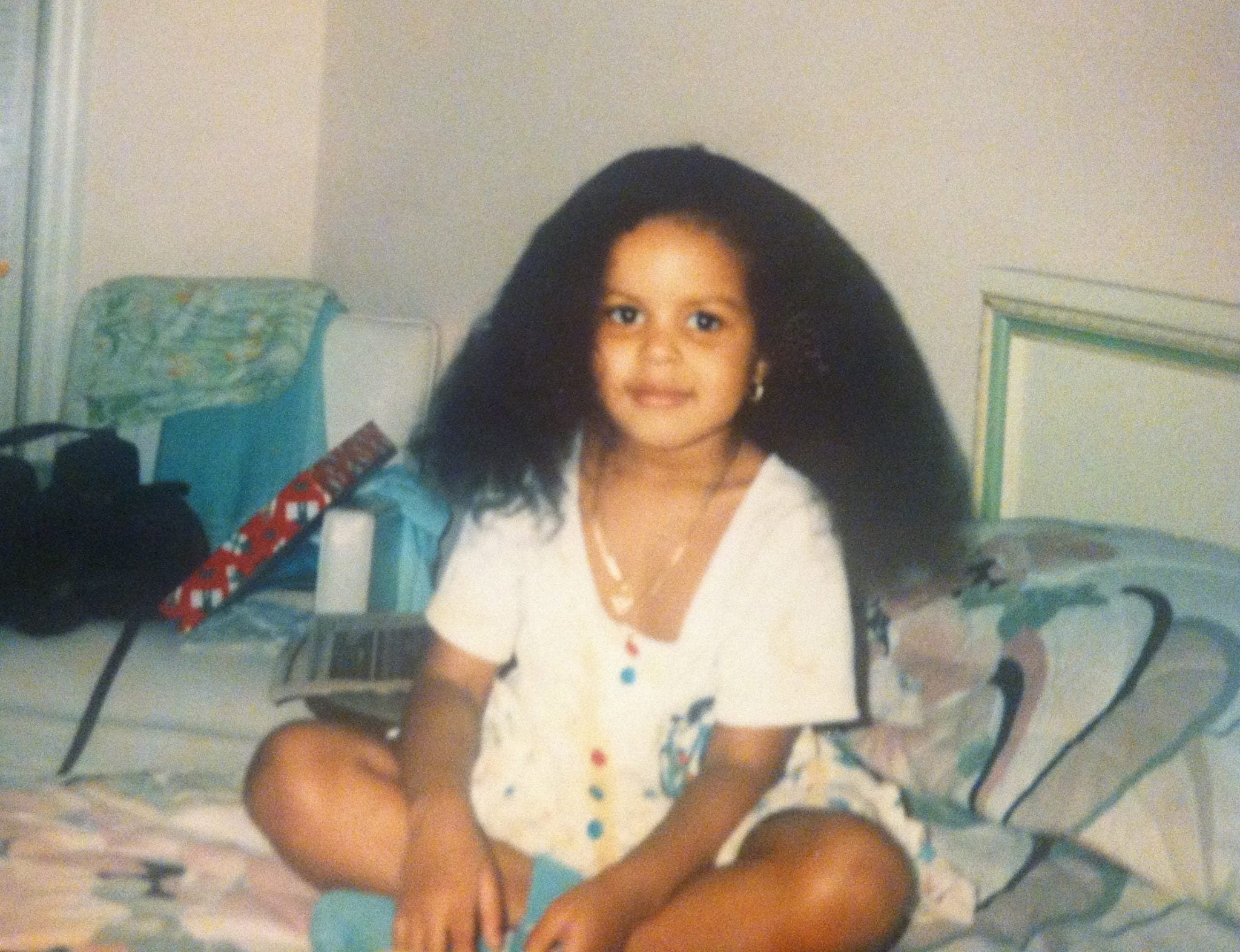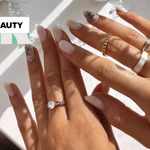Hair oiling or murdha taila (which means the anointing of the scalp with oil) is an ancient technique recently reintroduced to Western culture by way of Ayurvedic medicine. This practice was performed by women in the Middle East and Africa for more than 4,000 years as a way to improve hair strength and quality.
Hair oiling is one of the best practices you can incorporate into your wash day routine. The process includes a strand and scalp massage, both which are key to increasing blood circulation and encourage hair growth. Regular practice will condition hair and make it grow strong, smooth and lustrous.
I was introduced to the indian oiling method on natural hair by my mother, who took great care of my hair and scalp as a little girl.

Over the years, I rarely continued the practice but was soon forced to create a strict routine after a chunk of my hair fell out near the front of my scalp. After a trip to the dermatologist, I found out that stress and hormonal changes were the culprits. In an effort to regrow my new bald spot as fast as possible, I researched the various methods and oil types to find the best solution for my issue.
If you're experiencing breakage, scalp dandruff, and/or dryness, or if you're simply interested in improving the moisture levels of your hair, oiling is for you. The techniques, oil combinations and frequency you choose to select depends on your hair needs, so explore and try the best fit for your lifestyle.
THE BENEFITS
Stronger Hair
Hair oiling allows essential vitamins and minerals to protect the hair cuticles from damage caused by free radicals. To make your oiling sessions more worthwhile, it's important to use oils that actually penetrate the hair shaft. Detailed below are some of the best oils for restoring moisture into your strands, but others to consider include Mustard, Jasmine and Amla. Most importantly, have fun and experiment to find out which oils work best for your hair type.
Hair Regrowth
Scalp massages are proven to increase blood flow and circulation, which contributes to overall hair health. Oil lubricates the scalp, providing nourishment and relief for dry skin. It took two months of weekly oiling for me to see the benefits of regrowth in my hair.
Reduces Dandruff
As if the other benefits weren't enough reason to start incorporating oil massages immediately, this routine also offers psychological benefits. Scalp massages stimulate the *parasympathetic nervous system — *the parts of our nervous system that help us relax. Studies have shown that regular practice helps reduce anxiety, promotes sound sleep, stimulates the release of good-feeling endorphins and re-energizes our minds.
THE OILS
The oils listed are touted as being some of the best and most easily penetrable options for the hair shaft.
Lightweight - Coconut Oil
This is a favorite among many, but be careful, as coconut oil doesn't work for everyone. Due to its lightweight consistency, this oil is absorbed almost immediately, making it a less desirable option for those with thicker, coarser strands.
Lightweight - Grapeseed Oil
Although light, grapeseed oil contains Vitamin E and linoleic acid which are both fantastic in restoring moisture to dry, brittle hair. This oil nourishes hair strands without the greasy, weighed down feeling.
Medium - Sweet Almond Oil
Almond oil is high in vitamins A, B, D and E, as well as magnesium, zinc and potassium, all of which are helpful in preventing hair loss. Though heavier than coconut and grapeseed, almond oil smooths the hair shaft and is one of the best options for those with dryer than normal or eczema-prone scalps.
Heavy Duty - Castor Oil
If you can stand the temporary stickiness, castor oil is one of the most powerful ingredients you can have in your hair care arsenal. Filled with antioxidants such as Vitamin E and fatty acids, this emollient helps to protect, repair and replenish malnourished strands.
Astringent Oils
Peppermint: This concentrated microbial and anti-inflammatory oil naturally increases blood flow due to its main ingredient, menthol. Due to its potency, peppermint oil is best when mixed with one of the carrier oils above. Stronger roots, increased moisture and hair growth are all frequently touted benefits. The cooling sensation is an added bonus and also helps to relieve stress.
Rosemary: Rosemary is another anti-inflammatory oil which has a famous reputation for increasing hair growth and lowering DHT (a hormone responsible for hair loss).
THE TECHNIQUE
My full hair oiling routine and recipe can be found here:
https://www.youtube.com/watch?v=z0zPN40y0RI
Step 1. Mix your hair oils depending on your hair needs and preferences. Warm your mixture using hot water from a kettle. If possible, avoid heating your oil in the microwave.
Step 2. Divide hair into 4-5 sections and gently work the oil throughout your strands. Add oil to fingertips to massage scalp.
Step 3. Put hair in a plastic cap and let sit. The recommended time is two hours, but you can also leave in overnight (not recommended for acne-prone skin)
Step 4. Wash and condition hair, style as usual.
A 10-15 minute massage once or twice a week for two hours is the recommended frequency for healthy hair oiling.
CONSIDERATIONS
As with everything in this world, too much of a good thing could become a bad thing.
Massages done too vigorously or too often could lead to excessive hair fall. Always check your scalp for sores and lesions, and avoid hair oiling if you suspect any negative allergic reactions.
Is heavy oiling a practice you've incorporated into your wash day routine? Are you ready to try the Indian oiling method on natural hair? Let us know in the comments!







